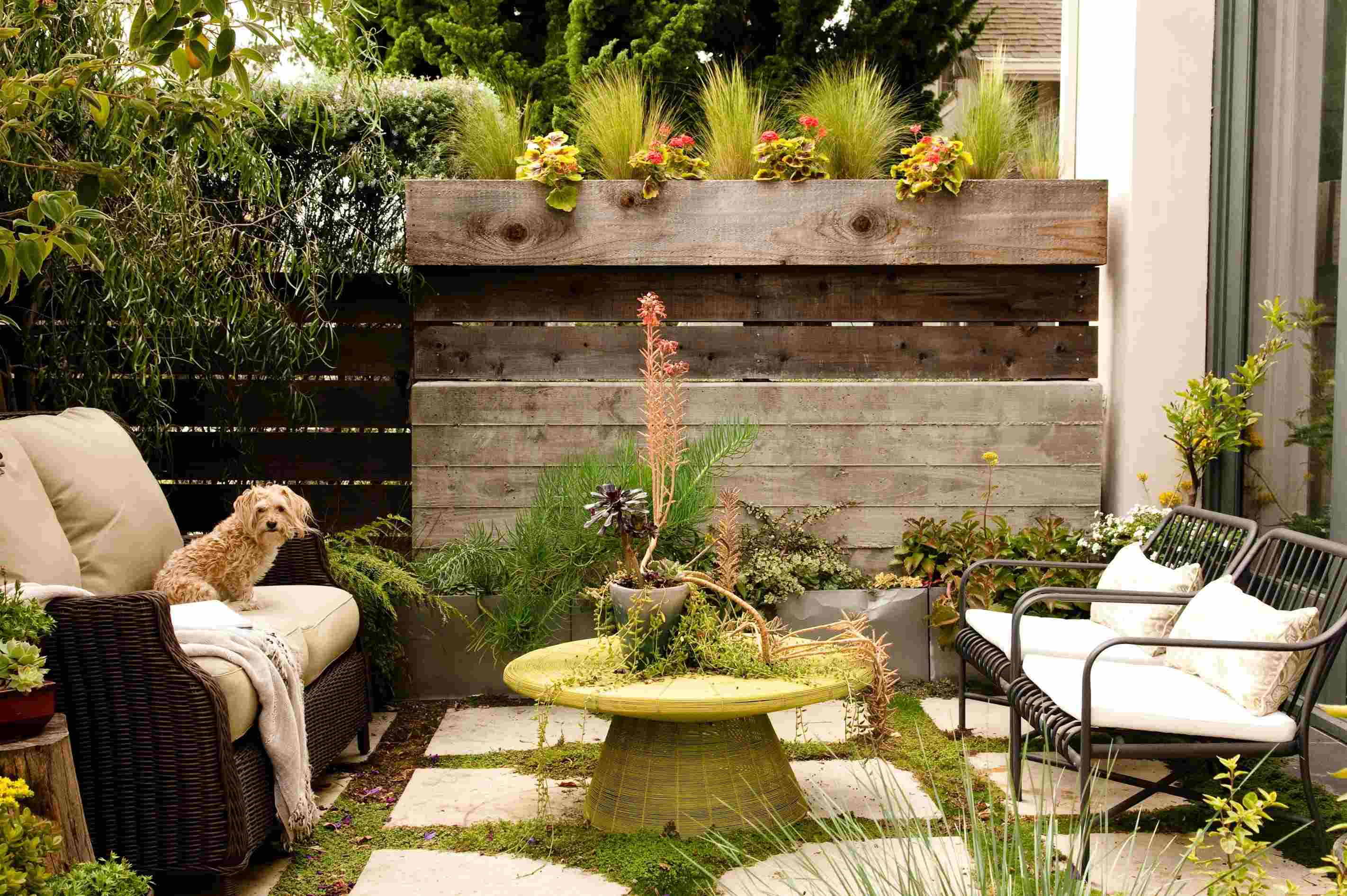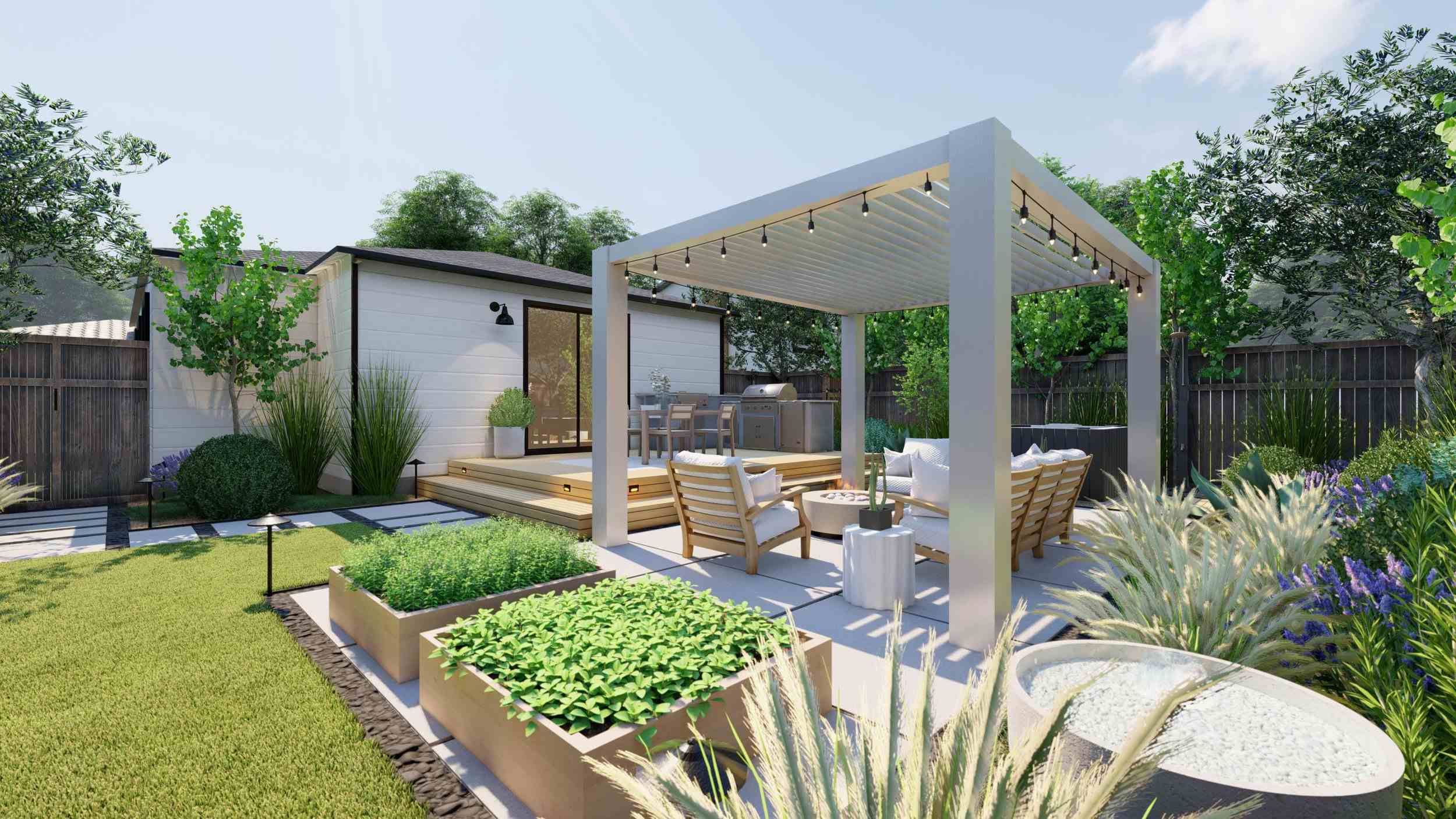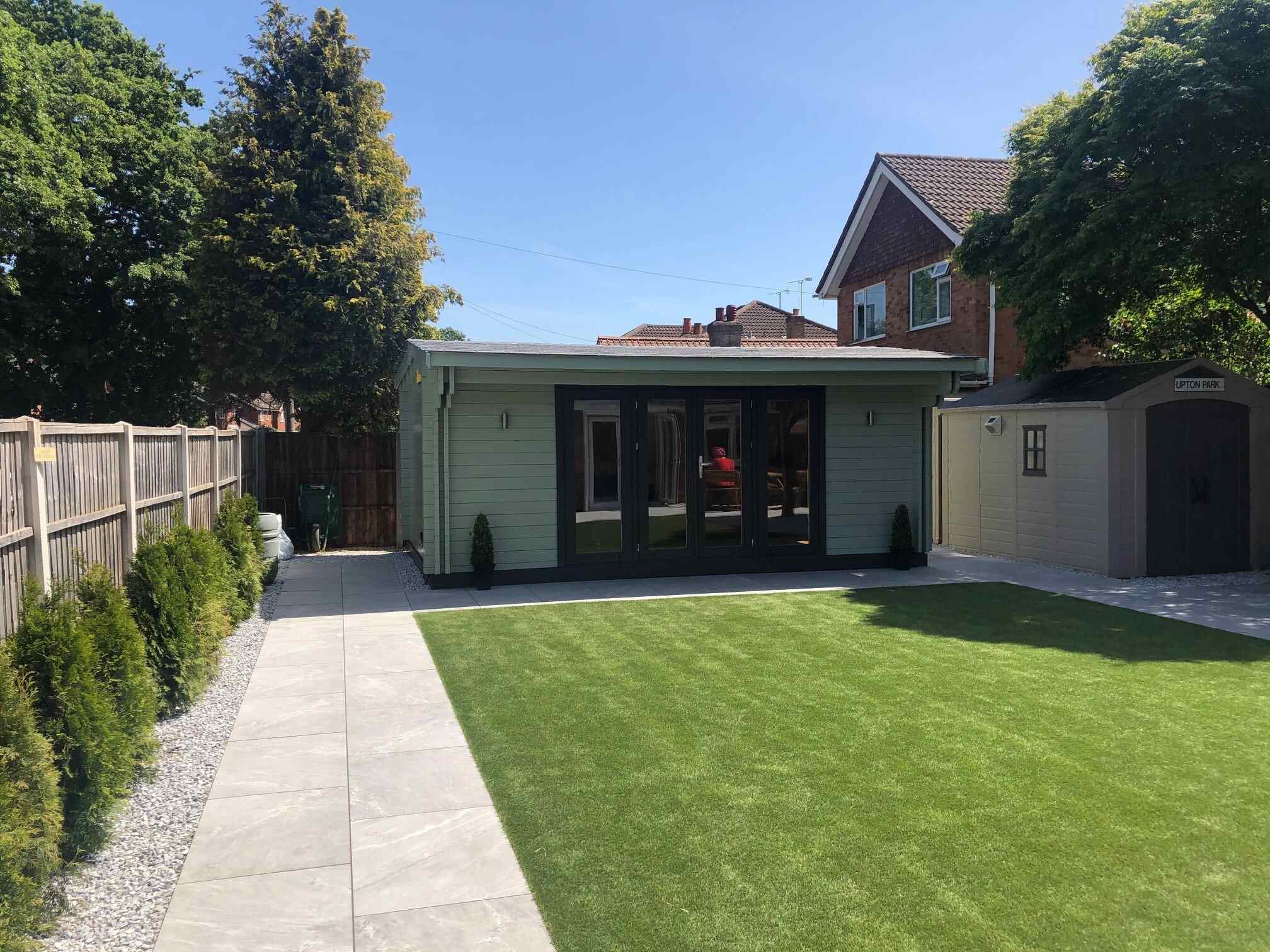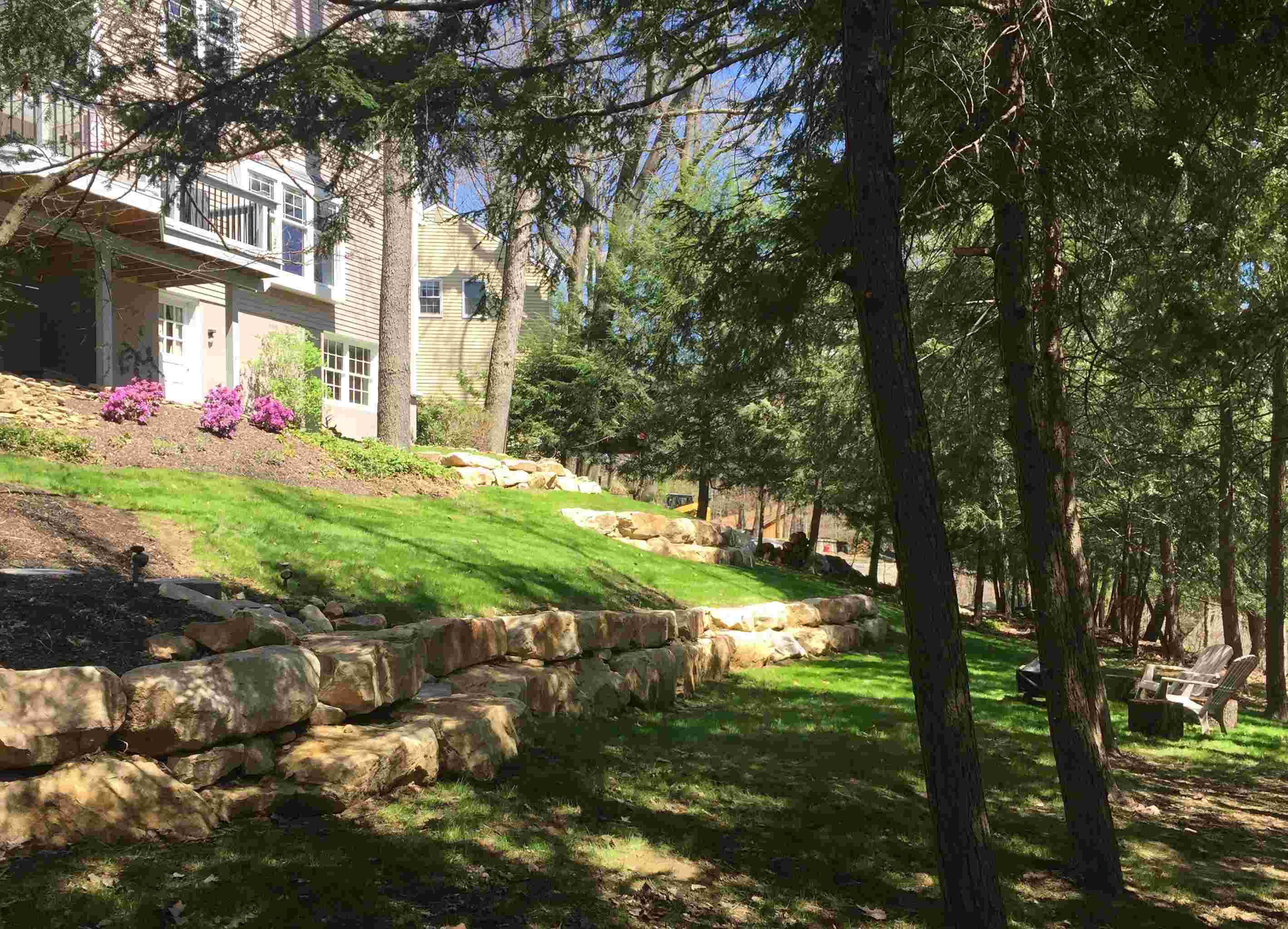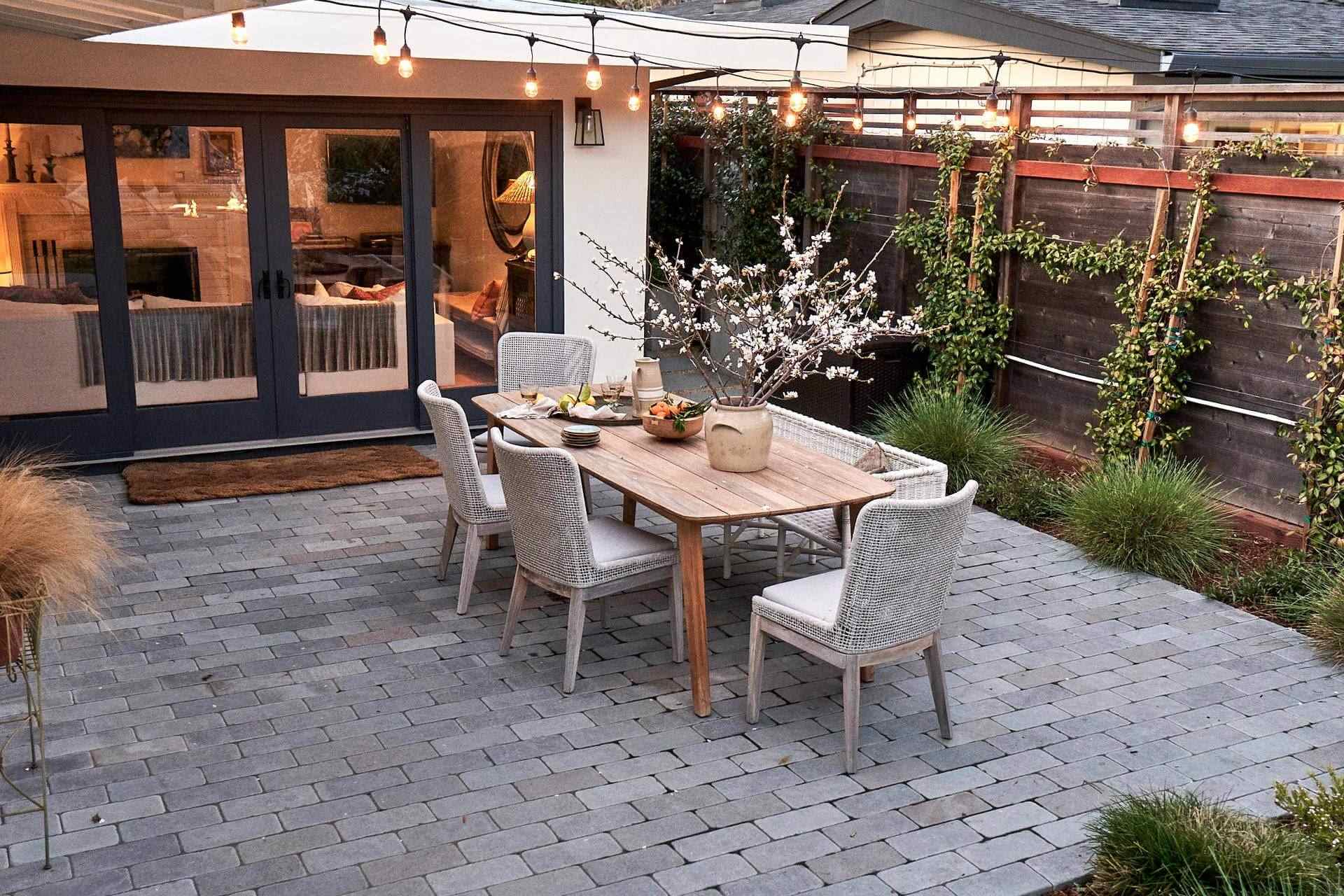Home>Gardening Tips and Tricks>Eco-Friendly Gardening>How To Compost In Backyard
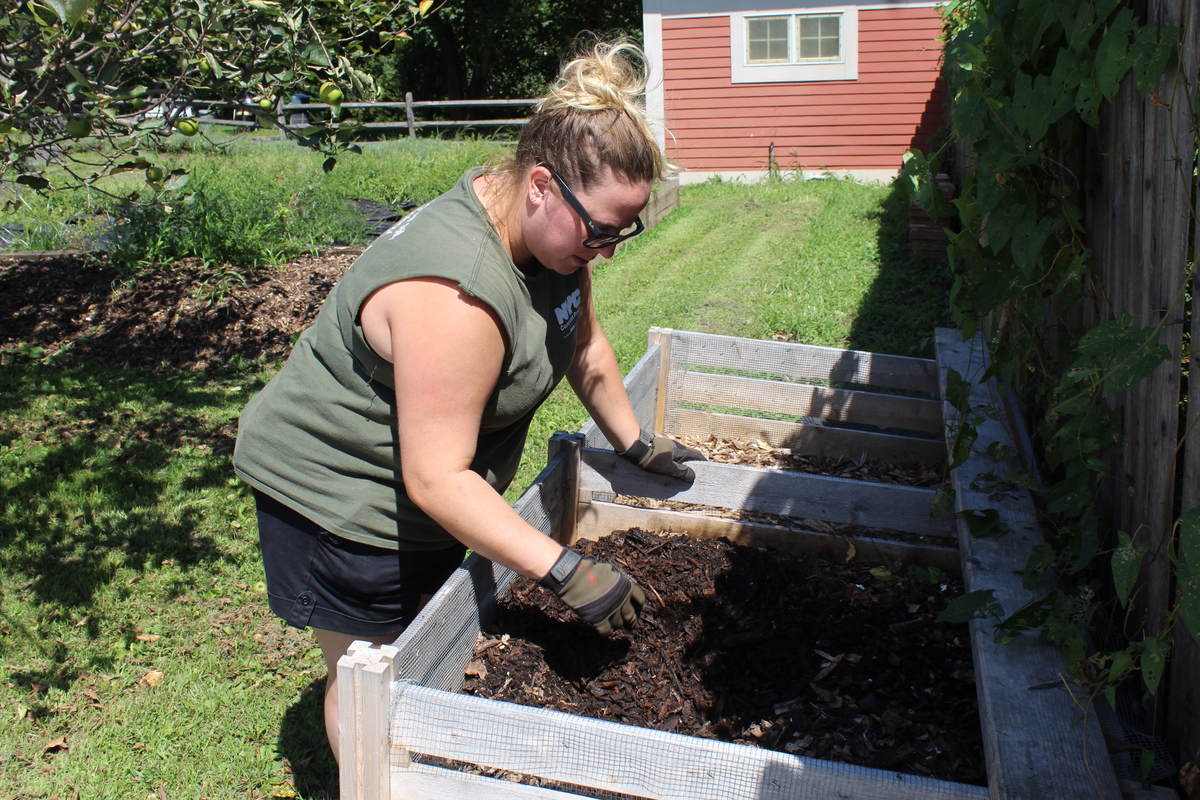

Eco-Friendly Gardening
How To Compost In Backyard
Modified: January 22, 2024
Discover how to compost in your backyard and embrace eco-friendly gardening. Reduce waste and create nutrient-rich soil for your plants.
(Many of the links in this article redirect to a specific reviewed product. Your purchase of these products through affiliate links helps to generate commission for Chicagolandgardening.com, at no extra cost. Learn more)
Table of Contents
Introduction
Welcome to the world of eco-friendly gardening! If you are passionate about gardening and want to minimize your impact on the environment, one great way to do so is by embracing eco-friendly gardening practices. One of the key aspects of eco-friendly gardening is composting. Not only does composting help reduce waste and improve soil health, but it also allows you to create nutrient-rich fertilizer for your plants.
In this article, we will delve into the world of composting in your backyard and provide you with all the information you need to get started. Whether you are a beginner or have some experience with composting, this guide will equip you with the knowledge and skills to become a successful composter.
Besides the environmental benefits, composting also saves you money. You no longer need to purchase expensive chemical-based fertilizers or dispose of your organic waste in plastic bags. Instead, you can recycle kitchen scraps, yard trimmings, and other organic materials to create your own rich and healthy soil amendment. Composting is a practice that will not only benefit your garden, but also contribute to a more sustainable and eco-friendly lifestyle.
But first, let’s understand why composting is such a valuable practice for gardeners and the environment as a whole.
Benefits of Composting
Composting offers a myriad of benefits for both gardeners and the environment. Let’s explore some of the key advantages:
1. Reduces Waste: Composting allows you to divert organic waste from the landfill. Instead of contributing to methane emissions, which are harmful greenhouse gases, you can transform your kitchen scraps, yard waste, and other organic materials into a valuable resource for your garden.
2. Improves Soil Health: Adding compost to your soil improves its structure, texture, and fertility. Compost acts as a natural conditioner, enhancing the soil’s ability to retain moisture, promotes better drainage, and provides essential nutrients to plants. The result is healthier, more productive plants and a thriving garden.
3. Enriches Nutrient Content: Compost is a nutrient-rich fertilizer that delivers a balanced combination of nitrogen, phosphorus, potassium, and micronutrients. The slow-release nature of compost ensures a steady supply of nutrients to plants over time, reducing the need for synthetic fertilizers and preventing nutrient imbalances.
4. Enhances Plant Growth: The improved soil structure and nutrient content provided by compost create optimal growing conditions for plants. Compost encourages vigorous root growth, increases drought resistance, and supports disease and pest resistance, resulting in healthier and more resilient plants.
5. Reduces Water Usage: Compost enhances soil moisture retention, reducing the need for frequent watering. It helps prevent water runoff, allowing plants to absorb water more efficiently. Ultimately, this helps conserve water resources and saves you time and money on irrigation.
6. Encourages Biodiversity: Compost promotes a diverse and balanced ecosystem in your garden. It provides a food source for earthworms, beneficial bacteria, fungi, and other microscopic organisms that are vital for healthy soil. These organisms break down organic matter further, releasing nutrients for plants and improving overall soil biology.
7. Minimizes Chemical Use: By using compost, you can reduce or eliminate the use of synthetic fertilizers, which often contain harmful chemicals. This promotes a chemical-free and eco-friendly gardening approach, reducing the negative impact on the environment and the potential health risks associated with chemical exposure.
Overall, composting is a sustainable practice that supports the health of your garden, conserves resources, reduces waste, and contributes to a greener and more eco-friendly world.
Getting Started with Composting
If you’re ready to embark on your composting journey, here are the essential steps to get started:
1. Choose a Composting Method: There are various composting methods to consider, depending on your available space and personal preference. Common options include traditional compost bins, vermiculture (worm composting), and compost tumblers. Research each method to determine which one suits your needs best.
2. Find a Suitable Location: Select an appropriate spot for your composting system. Ideally, it should be convenient to access and have good drainage. If you opt for an outdoor compost bin, ensure it receives adequate sunlight and is protected from extreme weather conditions.
3. Set up Your Compost Bin: Follow the instructions provided with your chosen composting method to assemble and set up your compost bin. Ensure it is sturdy, well-ventilated, and has a lid to keep out pests and retain moisture.
4. Collect Compostable Materials: Start collecting organic materials for your compost pile. These can include fruit and vegetable scraps, coffee grounds, tea leaves, eggshells, yard waste (grass clippings, leaves, small branches), and shredded paper or cardboard. Avoid adding meat, dairy, oily foods, and pet waste, as these can attract pests or introduce harmful bacteria.
5. Add Materials to the Compost Pile: Begin layering your compostable materials in the bin. Aim for a balance between “green” (nitrogen-rich) and “brown” (carbon-rich) materials. Alternate layers of kitchen scraps with dry leaves or shredded paper to maintain proper moisture levels and promote decomposition.
6. Manage the Compost Pile: Regularly turn or mix the compost pile to provide oxygen and facilitate decomposition. This helps break down the materials faster and prevents odors. Monitor the moisture levels and add water if the pile becomes too dry or cover it during heavy rainfall to prevent saturation.
7. Maintain the Compost: As the organic materials decompose, the compost pile will shrink. Add new layers of green and brown materials as you collect them, ensuring a balanced ratio. Avoid compacting the pile, as it needs airflow for proper decomposition.
8. Troubleshoot Common Issues: Keep an eye out for common composting problems such as foul odors, pests, or slow decomposition. Adjust the moisture levels, add more brown materials if it’s too wet, and avoid adding diseased or pest-infested plant material.
9. Utilize the Finished Compost: After several months to a year, your compost will transform into dark, crumbly, nutrient-rich humus. Use it as a top dressing for your garden beds, mix it with potting soil for container plants, or blend it with water to make compost tea for a liquid fertilizer.
Now that you have the basics of getting started with composting, you can actively contribute to a healthier and more sustainable garden ecosystem.
Choosing a Composting Method
When it comes to composting, there are several methods to choose from. Each method has its own advantages and considerations. Here are the most common composting methods to help you make an informed decision:
1. Traditional Compost Bins: This method involves using a compost bin or heap in your backyard. It allows for the decomposition of organic materials through natural processes. Traditional compost bins offer flexibility in terms of size and can accommodate a wide range of compostable materials. They are a great option for those with ample space and a larger volume of organic waste.
2. Vermiculture (Worm Composting): Vermiculture is the process of using special composting worms, such as red wigglers, to break down organic matter. This method is ideal for individuals with limited outdoor space, as it can be done in a small container indoors or on a balcony. Worm composting is efficient and produces nutrient-rich worm castings, also known as vermicompost, which are perfect for houseplants or small garden beds.
3. Compost Tumblers: Compost tumblers are designed to accelerate the composting process by providing a controlled environment for decomposition. These bins are sealed and can be easily rotated, ensuring proper aeration and mixing of the materials. Compost tumblers are a popular choice for those looking for a quicker composting process, as they produce finished compost in a shorter amount of time.
4. Backyard Composting Systems: If you have a large garden or produce a significant amount of organic waste, you may consider investing in a backyard composting system. These systems often include multiple compost bins or sections, allowing for batch composting or continuous composting. They offer efficiency and flexibility for managing larger quantities of organic materials.
5. Bokashi Composting: Bokashi composting is a method that uses the power of fermentation to break down organic matter. It involves using a special bokashi composting kit and adding a mixture of microorganisms to the organic waste. Bokashi composting can handle a wide range of materials, including meat, dairy, and oily foods, making it a suitable option for individuals who want to compost these types of waste.
Consider your specific needs, available space, and the amount of organic waste generated when selecting a composting method. Remember that all methods require a level of commitment and regular maintenance to ensure successful composting.
Setting Up Your Compost Bin
Once you have chosen the composting method that suits your needs, the next step is to set up your compost bin. Here’s how to do it:
1. Choose the Right Size: Determine the appropriate size of your compost bin based on the amount of organic waste you generate and the available space in your backyard. A general guideline is to have a bin that is at least 3 feet by 3 feet in dimensions. This size allows for efficient composting and proper airflow within the pile.
2. Consider the Material: There are various types of compost bins available, ranging from plastic bins to wooden or wire mesh structures. Choose a material that is durable, resistant to weather conditions, and easy to manage. Plastic bins are a popular choice due to their lightweight nature, low maintenance, and ability to retain moisture.
3. Location, Location, Location: Find a suitable spot for your compost bin. It should be easily accessible for adding materials and turning the compost, but also have a level and well-draining surface to prevent waterlogging. Aim for a location that gets partial sunlight, as this helps with decomposition, but avoid direct sunlight, as it can lead to excessive heat buildup.
4. Prepare the Ground: Before placing your compost bin, ensure that the ground is level and free from any obstructions such as rocks or tree roots. If necessary, use a shovel or rake to clear the area and create a flat surface for your bin to rest on.
5. Create a Base: To discourage pests and allow proper drainage, it’s beneficial to create a base for your compost bin. This can be done by placing a layer of wire mesh or hardware cloth at the bottom of the bin. This prevents rodents or other critters from burrowing into the pile while allowing excess moisture to drain.
6. Add aeration and drainage: Proper aeration is crucial for the composting process. Ensure that your compost bin has adequate ventilation, either through pre-drilled holes or slats in the sides. Additionally, consider elevating the bin slightly to improve airflow and drainage.
7. Secure the Bin: If your compost bin has a removable lid, make sure it fits securely to prevent pests from accessing the pile. If not, you can cover the top with a layer of burlap or a tarp to protect the compost from excessive moisture or rain.
8. Labeling and Maintenance: Lastly, label your compost bin with a sign to indicate its purpose and raise awareness about composting. Regularly maintain the bin by monitoring moisture levels, turning the compost, and ensuring a proper balance of green and brown materials.
With your compost bin properly set up, you can now begin adding compostable materials and kickstart the composting process in your own backyard.
Collecting and Adding Compostable Materials
Collecting and adding the right compostable materials is essential for a successful composting process. Here’s a guide to help you gather the materials:
1. Kitchen Scraps: Collect fruit and vegetable scraps, including peels, cores, and seeds. Eggshells, coffee grounds, tea leaves, and filters are also great additions. Avoid adding oily or greasy food waste, as it can create odors and attract pests.
2. Yard Waste: Gather grass clippings, leaves, small branches, and plant trimmings from your yard. Chop or shred larger pieces to help them decompose faster. Avoid adding weeds that have gone to seed or plants affected by diseases or pests, as it may lead to spreading them in the compost.
3. Shredded Paper and Cardboard: Use shredded paper or cardboard as “brown” materials for your compost pile. This includes newspaper, plain cardboard, paper towel rolls, and shredded office paper. Avoid glossy or colored paper, as it may contain chemicals that hinder the composting process.
4. Straw or Hay: If available, add straw or hay to the compost bin. These materials provide carbon and help maintain proper airflow within the pile. Make sure they are free from herbicides or pesticides that could be harmful to your plants.
5. Wood Ash: Moderate amounts of wood ash can be added to the compost to increase alkalinity and provide potassium. However, avoid using charcoal ash or excessive amounts, as it can raise the pH levels too much.
6. Chop and Mix: Chop or cut larger organic materials into smaller pieces to speed up the composting process. Mix the different types of materials together to create a balanced mixture of “green” (nitrogen-rich) and “brown” (carbon-rich) components. Aim for a ratio of roughly 3 parts brown to 1 part green.
7. Avoid Animal By-products: To prevent attracting pests and potential diseases, refrain from adding meat, dairy products, bones, or pet waste to your compost pile.
8. Moisture Management: Maintain proper moisture levels in your compost pile by ensuring it feels like a damp sponge. If the pile is too dry, add water during dry periods or when adding drier materials. Conversely, if it is too wet, add dry brown materials to absorb the excess moisture.
Remember to regularly collect and add compostable materials to your compost bin to maintain a healthy decomposition process. With a mix of organic waste, you’ll soon create nutrient-rich compost for your garden.
Managing the Compost Pile
Managing your compost pile is crucial for achieving optimal decomposition and producing high-quality compost. Here are some important steps to effectively manage your compost pile:
1. Turning the Pile: Regularly turning or mixing the compost pile is essential for providing oxygen to the microorganisms responsible for decomposition. Use a garden fork or compost aerator to gently turn the pile every 1-2 weeks. This process helps break up any compacted materials, promotes even decomposition, and prevents the formation of anaerobic conditions.
2. Temperature Monitoring: Keep an eye on the temperature of your compost pile. As the organic matter breaks down, it generates heat. Ideal composting temperatures range between 135°F to 160°F (57°C to 71°C). Use a compost thermometer to monitor the internal temperature regularly. A high temperature indicates active decomposition, while a low temperature may indicate a lack of sufficient nitrogen or insufficient aeration.
3. Moisture Management: Maintain the moisture content of your compost pile to promote decomposition. The compost should feel like a damp sponge. If it becomes too dry, add water while turning the pile. Conversely, if it becomes too wet, add dry brown materials like shredded paper or leaves to absorb excess moisture.
4. Layering Materials: As you add new compostable materials, layer them into the existing pile. Place fresh green materials, such as kitchen scraps or freshly cut grass, on top of existing brown materials like dry leaves or shredded paper. Layering helps maintain the proper balance of carbon and nitrogen, ensuring efficient decomposition.
5. Avoid Compaction: Avoid compacting the compost pile. Compression restricts airflow, slows down decomposition, and creates anaerobic pockets. Instead, loosely layer materials and regularly turn the pile to maintain proper aeration.
6. Monitor Odors: A well-maintained compost pile should have an earthy, pleasant smell. Foul odors like ammonia or rotting indicate an imbalance in the compost pile, such as excess moisture or too much nitrogen-rich materials. If odors occur, adjust the moisture levels, add more brown materials, and ensure proper aeration.
7. Patience and Time: Composting is a natural process that takes time. Depending on the conditions and the materials used, it can take anywhere from a few months to a year for your compost to fully mature. Be patient and allow nature to work its magic.
By following these management practices, you can maintain a well-balanced and actively decomposing compost pile, resulting in nutrient-rich compost for your garden.
Maintaining the Compost
Once your compost pile is established, it’s important to maintain it properly to ensure successful decomposition and the production of nutrient-rich compost. Here are some key aspects to consider when maintaining your compost:
1. Regular Turning: Continue turning or mixing the compost pile every 1-2 weeks. This process helps distribute heat, moisture, and oxygen evenly throughout the pile, promoting faster decomposition. Use a garden fork or compost aerator to gently turn the materials, breaking up any clumps and creating space for airflow.
2. Moisture Monitoring: Regularly monitor the moisture content of your compost pile. It should remain consistently moist, similar to a damp sponge. If the pile becomes too dry, add water during turning to ensure the materials continue to break down effectively. If it becomes too wet, add dry brown materials like shredded paper or dry leaves to absorb excess moisture.
3. Addition of Compostable Materials: As you collect kitchen scraps, yard trimmings, or other organic materials, continue adding them to the compost pile. Aim for a balance of green (nitrogen-rich) and brown (carbon-rich) materials to maintain a healthy composting process. Alternate layers of kitchen scraps with dry leaves or shredded paper to promote proper decomposition.
4. Monitoring the Carbon-to-Nitrogen Ratio: It’s important to maintain a balanced carbon-to-nitrogen (C:N) ratio in your compost pile. The ideal ratio is approximately 25-30 parts carbon to 1 part nitrogen. Too much nitrogen can lead to a smelly pile, while too much carbon may slow down the decomposition process. Adjust the ratio by adding more brown materials (carbon) if the pile becomes too wet or by adding more green materials (nitrogen) if it becomes too dry.
5. Patience: Composting is a natural process that takes time. Be patient and allow your compost pile to mature. The decomposition rate can vary based on factors such as temperature, moisture levels, and the types of materials used. Regularly turning the pile and maintaining the right conditions will help speed up the process.
6. Harvesting the Compost: Over time, the materials in your compost pile will transform into dark, crumbly compost. This signifies that the compost is ready for use in your garden. Harvest the compost by sifting it through a compost screen or by removing the mature compost from the bottom of the pile. Use the finished compost to enrich your soil, improve plant health, and enhance overall garden productivity.
7. Continual Improvement: Composting is a continuous learning process. Pay attention to the results you achieve and make adjustments as needed. Experiment with different materials, mix ratios, and management techniques to find what works best for your compost pile and garden.
By maintaining proper moisture, regularly turning the pile, monitoring the carbon-to-nitrogen ratio, and practicing patience, you can ensure the successful decomposition of organic materials into nutrient-rich compost for a thriving and sustainable garden.
Troubleshooting Common Composting Issues
Composting is a natural process, but sometimes issues can arise that hinder the optimal decomposition of organic materials. Here are some common composting issues and tips for troubleshooting them:
1. Odor: If your compost pile has a foul smell, it may indicate an imbalance in the materials. To combat odors, add more brown materials like dry leaves or shredded paper to absorb excess moisture and adjust the carbon-to-nitrogen ratio. Avoid adding meat, dairy, or oily food waste, as these can contribute to unpleasant odors and attract pests.
2. Pests: If your compost pile attracts pests such as rodents or flies, it’s important to address the issue promptly. Make sure the compost bin is securely closed and inaccessible to animals. Avoid adding food waste or materials that attract pests. You can also bury food waste under a layer of brown materials to discourage pests.
3. Slow Decomposition: If your compost pile is taking longer than expected to decompose, it may be due to a lack of nitrogen-rich materials or insufficient aeration. Add more green materials such as kitchen scraps or fresh grass clippings to boost the nitrogen content. Consider turning the pile more frequently to provide adequate oxygen for decomposition.
4. Excessive Moisture: If the compost pile is too wet, it can lead to a foul smell and slow decomposition. Add dry brown materials like shredded paper or dry leaves to absorb the excess moisture. Ensure proper aeration and drainage by turning the pile more frequently or adding a layer of coarse material at the base to encourage airflow.
5. Dry Pile: If the compost pile is too dry, decomposition slows down. Add water during turning to moisten the materials. Avoid soaking the pile; instead, aim for a damp sponge-like consistency. Mixing green materials with high water content, such as kitchen scraps or fresh grass clippings, can also boost moisture levels.
6. Unwanted Weed Seeds: If you notice an abundance of weeds in your compost, it may indicate that the pile is not heating up enough to kill weed seeds. Ensure the compost reaches a temperature between 135°F to 160°F (57°C to 71°C) during decomposition to destroy weed seeds. Avoid adding weeds that have gone to seed or dispose of them separately.
7. Excessive Heat: If your compost pile becomes excessively hot, it may indicate too high a nitrogen content or insufficient aeration. Adjust the carbon-to-nitrogen ratio by adding more carbon-rich materials like dry leaves or shredded paper. Increase aeration by turning the pile more frequently to dissipate excess heat.
8. Unbalanced Carbon-to-Nitrogen Ratio: If your compost pile is not decomposing effectively, it may indicate an imbalanced carbon-to-nitrogen (C:N) ratio. Adjust the ratio by adding more carbon-rich materials (brown) if the pile becomes too wet and smelly or by adding more nitrogen-rich materials (green) if it appears dry and fails to decompose.
By troubleshooting and addressing these common composting issues, you can maintain a healthy and productive compost pile that yields nutrient-rich compost for your garden.
Using the Finished Compost
Once your compost has fully decomposed and transformed into nutrient-rich humus, it’s time to put it to good use in your garden. Here are some ways you can use the finished compost:
1. Soil Amendment: Incorporate the finished compost into your garden soil to improve its structure, fertility, and overall health. Spread a layer of compost over the garden bed and gently work it into the top few inches of soil. This will enhance nutrient availability, moisture retention, and drainage, creating an ideal environment for plant growth.
2. Planting and Transplanting: Mix compost with potting soil or use it as a top dressing when planting or transplanting various plants. The nutrients and beneficial microorganisms in the compost will provide a boost to young plants and help establish them quickly in their new environment.
3. Mulching: Apply a layer of compost around the base of plants as mulch. This helps conserve moisture, suppress weeds, regulate soil temperature, and gradually release nutrients to the plant roots. Avoid placing the mulch directly against the stems or trunks of plants to prevent rot.
4. Compost Tea: Make compost tea by steeping a handful of finished compost in water for a few days. Use this nutrient-rich liquid as a natural liquid fertilizer by pouring it around the base of plants. Compost tea provides an immediate nutrient boost and supports the growth of beneficial soil organisms.
5. Container Gardening: Mix compost with potting soil for container gardening. The compost provides essential nutrients and improves moisture retention and drainage in the containers. It also helps replenish nutrients over time, reducing the need for additional fertilizers.
6. Seed Starting: Create a seed-starting mix by combining compost with other growing media. The compost provides a rich source of nutrients for young seedlings and helps retain moisture needed for germination.
7. Compost as Top Dressing: Periodically add a layer of compost to existing garden beds as a top dressing. This replenishes nutrients, improves soil structure, and supports the ongoing health and productivity of plants.
8. Compost as Lawn Dressing: Spread a thin layer of compost over your lawn to improve soil quality, boost microbial activity, and enhance overall lawn health. Use a rake or spreader to evenly distribute the compost and lightly water it in.
Remember, compost is a valuable resource that enriches the soil and promotes healthy plant growth. Utilize your finished compost strategically throughout your garden to maximize its benefits and create a thriving, sustainable outdoor space.
Conclusion
Congratulations on taking the initiative to embrace eco-friendly gardening practices through composting. By harnessing the power of nature and recycling organic materials, you can create nutrient-rich compost that nourishes your garden while reducing waste and benefiting the environment.
We’ve explored the benefits of composting, from reducing waste and improving soil health to minimizing the use of chemicals and conserving water. Composting is a sustainable practice that allows you to actively contribute to a greener and more eco-friendly world.
To get started with composting, you learned about choosing a composting method that suits your needs and available space. Setting up your compost bin in the right location and managing it with regular turning and proper moisture levels are key for successful decomposition.
Collecting and incorporating compostable materials, such as kitchen scraps, yard waste, and shredded paper, is crucial for maintaining a healthy compost pile. Monitoring and troubleshooting common composting issues, including odor, pests, and slow decomposition, ensure a smooth composting process.
Finally, the moment arrives when your compost transforms into a dark, crumbly, nutrient-rich humus. Utilize the finished compost as a soil amendment, for planting and transplanting, mulching, compost tea, container gardening, seed starting, or as a top dressing for existing beds and lawns.
Embracing the practice of composting not only benefits your garden but also makes a positive impact on the environment. By reducing waste, enhancing soil health, and promoting sustainable gardening practices, you are playing a vital role in preserving our planet for future generations.
So, grab your compost bin, start collecting those kitchen scraps, and embark on this rewarding journey of eco-friendly gardening through composting!
